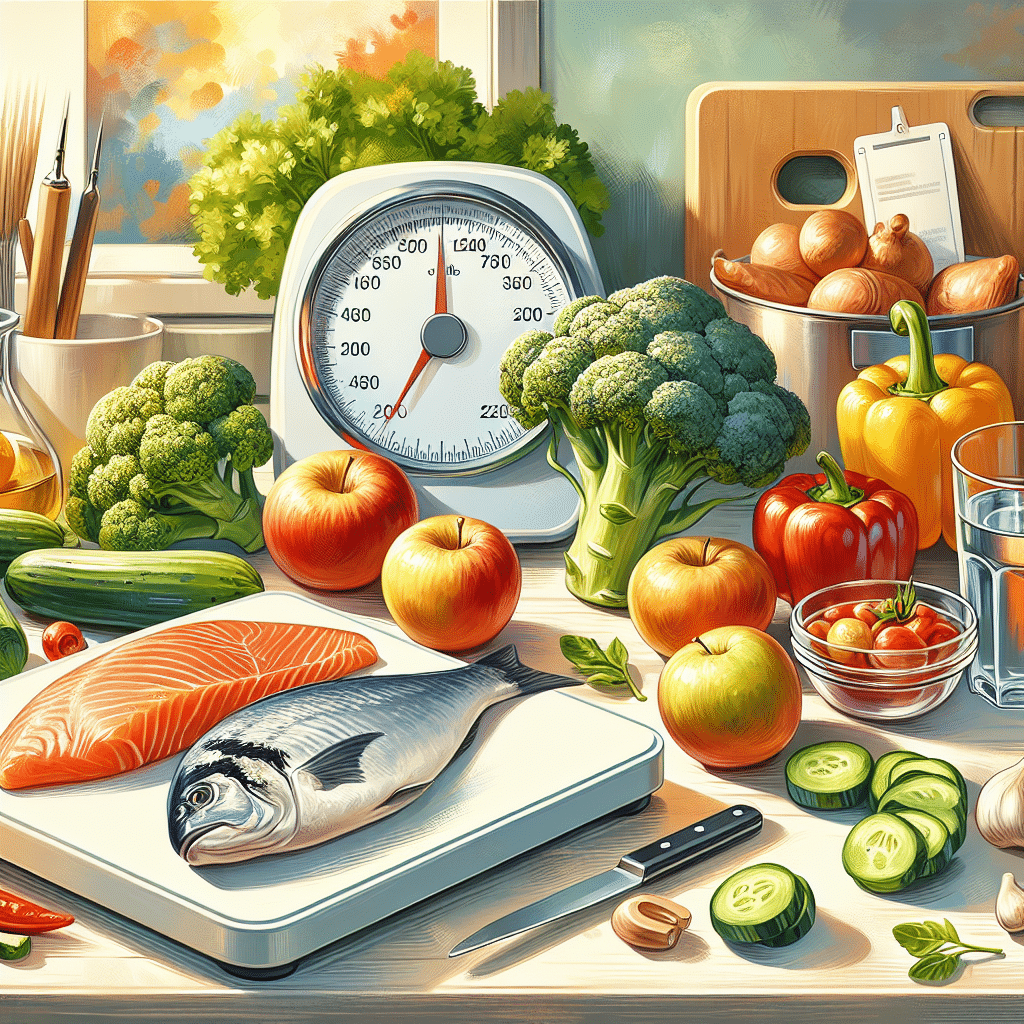Simple Home Meal Prep for Fitness Goals
Understanding Meal Prep
Meal prep is the practice of preparing meals in advance to support fitness goals. It involves planning, cooking, and portioning food, making it easier to stick to a healthy diet. Not only does it save time during busy weekdays, but it also helps in managing portion sizes, controlling calorie intake, and maintaining nutritional balance.
Identify Your Fitness Goals
Before you begin meal prepping, it’s essential to define your fitness goals. Are you looking to lose weight, gain muscle, or maintain your current weight? Understanding your goals will guide your meal choices, portion sizes, and nutritional focus.
Weight Loss
For weight loss, aim for meals that are lower in calories but high in nutrients. Focus on lean proteins, whole grains, and plenty of vegetables.
Muscle Gain
If your aim is to gain muscle, increase your intake of protein and healthy fats. Incorporate several nutrient-dense foods in each meal.
Maintenance
For maintenance, create balanced meals that support your activity level without excessive calories.
Planning Your Meals
-
Choose Your Recipes: Begin with selecting simple, nutritious recipes that align with your goals. Utilize resources like fitness blogs or cookbooks focused on healthy eating.
-
Create a Menu: Draft a weekly menu that includes breakfast, lunch, dinner, and snacks. This planning will streamline your grocery shopping list.
-
Portion Sizes: Pay attention to portion sizes. Consider using a food scale or measuring cups to ensure accuracy to meet dietary standards.
Grocery Shopping
-
Make a List: Based on your menu, compile a grocery list that includes fresh produce, lean proteins, whole grains, legumes, and healthy fats.
-
Choose Seasonal Ingredients: Opt for seasonal fruits and vegetables for freshness, flavor, and cost-effectiveness.
-
Stock Up on Staples: Keep pantry staples on hand such as quinoa, brown rice, canned beans, and spices. This aids in quick meal preparation.
Essential Meal Prep Tools
A few handy tools can make your meal prep process smoother:
-
Meal Prep Containers: Invest in reusable, BPA-free containers that are microwave and dishwasher safe. Look for a variety of sizes for different meals and snacks.
-
Labels: Use labels to mark the contents and dates of your meals to ensure freshness.
-
Sharp Knives and Cutting Boards: A great knife and a sturdy cutting board can speed up the chopping process significantly.
-
Kitchen Scale: A scale is useful for accurately measuring portion sizes, especially for proteins and grains.
Cooking Strategies
-
Batch Cooking: Prepare large quantities at once. Cook grains, proteins, and vegetables in bulk, then combine them into individual servings.
-
One-Pot Meals: Utilize one-pot recipes whenever possible. They minimize cleanup and often enhance flavor.
-
Stir-Frying and Roasting: These methods preserve nutrients and keep ingredients flavorful. Use minimal oil and plenty of spices.
-
Freezing Meals: Consider freezing individual portions for later. This is particularly useful if you prepare a large batch of soup, curry, or casserole.
Sample Meal Prep Ideas
Breakfast
-
Overnight Oats: Combine rolled oats, almond milk, and toppings like chia seeds and berries. Store in jars for easy grab-and-go breakfasts.
-
Egg Muffins: Whisk eggs with spinach, diced peppers, and feta cheese. Bake in muffin tins and refrigerate for a protein-packed breakfast.
Lunch
-
Quinoa Salad: Mix cooked quinoa with chickpeas, bell peppers, cucumber, and a lemon-tahini dressing. This dish can be altered with different veggies or proteins each week.
-
Grilled Chicken Bowls: Prepare grilled chicken breasts, brown rice, broccoli, and a drizzle of low-fat sauce. Portion them into containers for a filling meal.
Dinner
-
Vegetable Stir-Fry: Cook a mix of your favorite veggies in a small amount of oil and soy sauce. Add tofu or shrimp for protein.
-
Baked Salmon: Marinate salmon fillets in lemon juice and herbs. Bake alongside asparagus for an omega-3-rich dinner.
Snacks
-
Hummus and Veggies: Portion hummus into small containers and pair with sliced carrots, cucumbers, or bell peppers.
-
Energy Bites: Blend oats, nut butter, honey, and add-ins like chocolate chips or dried fruit. Roll into balls and refrigerate.
Storing Your Meals
-
Use the Right Containers: Invest in airtight containers to preserve freshness. Glass containers are ideal as they can go from freezer to oven.
-
Label and Date: Always label and date your meals. This practice helps you track what needs to be eaten first.
-
Refrigeration vs. Freezing: Meals stored in the fridge are best consumed within four days. For longer storage, freeze meals and defrost when needed.
Staying Motivated
-
Variety is Key: Change your meal prep recipes regularly to avoid boredom. Experiment with different cuisines and ingredients.
-
Set a Schedule: Dedicate a specific day and time each week for meal prepping, making it part of your routine.
-
Cook with Friends or Family: Invite others to join you in meal prepping. It can turn an otherwise solitary task into a fun, social activity.
Nutrition Considerations
-
Macronutrients: Prioritize a balance of carbohydrates, proteins, and fats. Understand your macronutrient ratios based on your personal goals.
-
Hydration: Don’t forget about your fluid intake. Prepare infused water or herbal teas to enjoy throughout the day.
-
Micronutrients: Incorporate a rainbow of fruits and vegetables to ensure you receive essential vitamins and minerals.
Conclusion
Meal prep is a powerful tool that can align culinary habits with fitness goals. By planning, shopping wisely, utilizing effective cooking strategies, and focusing on nutrition, you can simplify healthy eating. With consistency and creativity in your approach, meal prep will not only reinforce your commitment to fitness but also enrich your daily routine.
